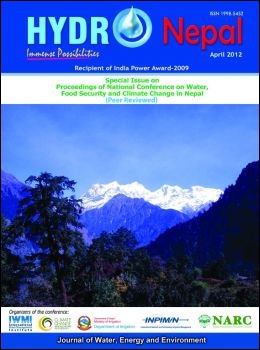Adaptation Mechanisms in Agriculture for Climate Change in Nepal
DOI:
https://doi.org/10.3126/hn.v11i1.7219Keywords:
Agriculture, climate change, adaptation, mitigation, NepalAbstract
In Nepal, impacts of climate change can be observed in varying levels of climate that are prevalent in diversified topography and vegetation. Broadly speaking, there are impacts of climate change in the Terai lowlands, the mid-hill valleys and mountains, and in the high Himalayas. Nepal is a unique climatic laboratory for studying the impacts of climate change.
Sixty-five percent of the Nepalese people engage in agriculture and more than 32% of Gross Domestic Product (GDP) comes from it. There are evidences of climate change in frequently changing monsoonal patterns resulting in droughts, floods, landslides, and other unexpected results that impair subsistence agriculture systems in the country. As a result, there is chronic food shortage in remote hills, and in the mountains, and the Terai, the grain bowl of Nepal, has been hit by food shortage. To date, around 3.9 million people have suffered from hunger and poverty. There are reports that major food crops of rice, maize, and wheat production have declined due to changes in monsoon patterns, insurgence of new pests, and decline in soil productivity. Efforts have been initiated to adopt drought and pest tolerant varieties, changes in planting time, and method of plantings as strategies for adaptation to climate change in agriculture. This paper attempts to highlight adaptation as a strategy to address issues of climate changes from the perspective of Nepalese agriculture.
DOI: http://dx.doi.org/10.3126/hn.v11i1.7219
Hydro Nepal Special Issue: Conference Proceedings 2012 pp.81-85
Downloads
Downloads
Published
How to Cite
Issue
Section
License
The copyright of the articles and papers published is held by HYDRO Nepal Journal.
The views and interpretation in this journal are those of author(s), and HYDRO Nepal does not bear any responsibility for the views expressed by authors in the journal.




